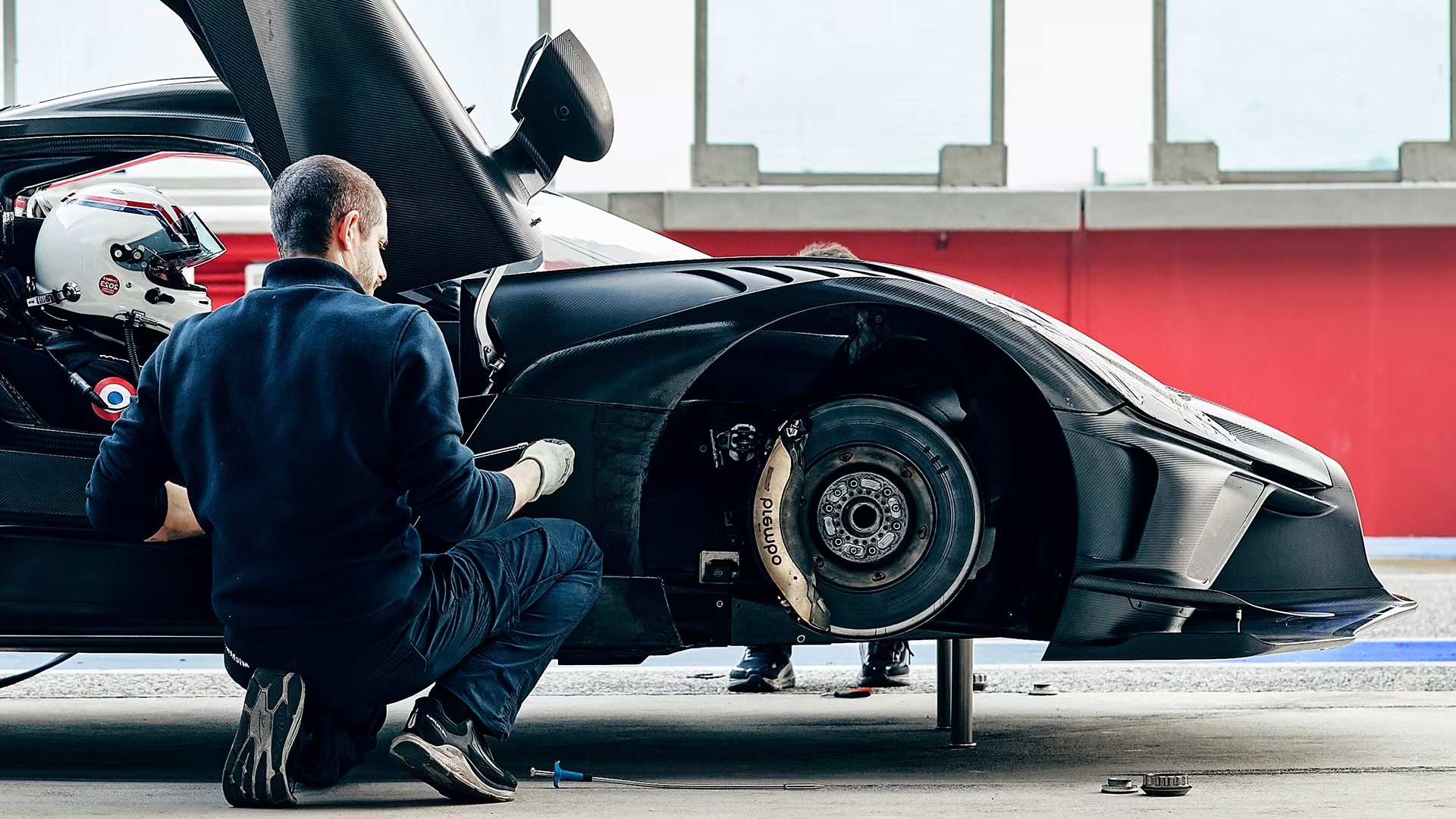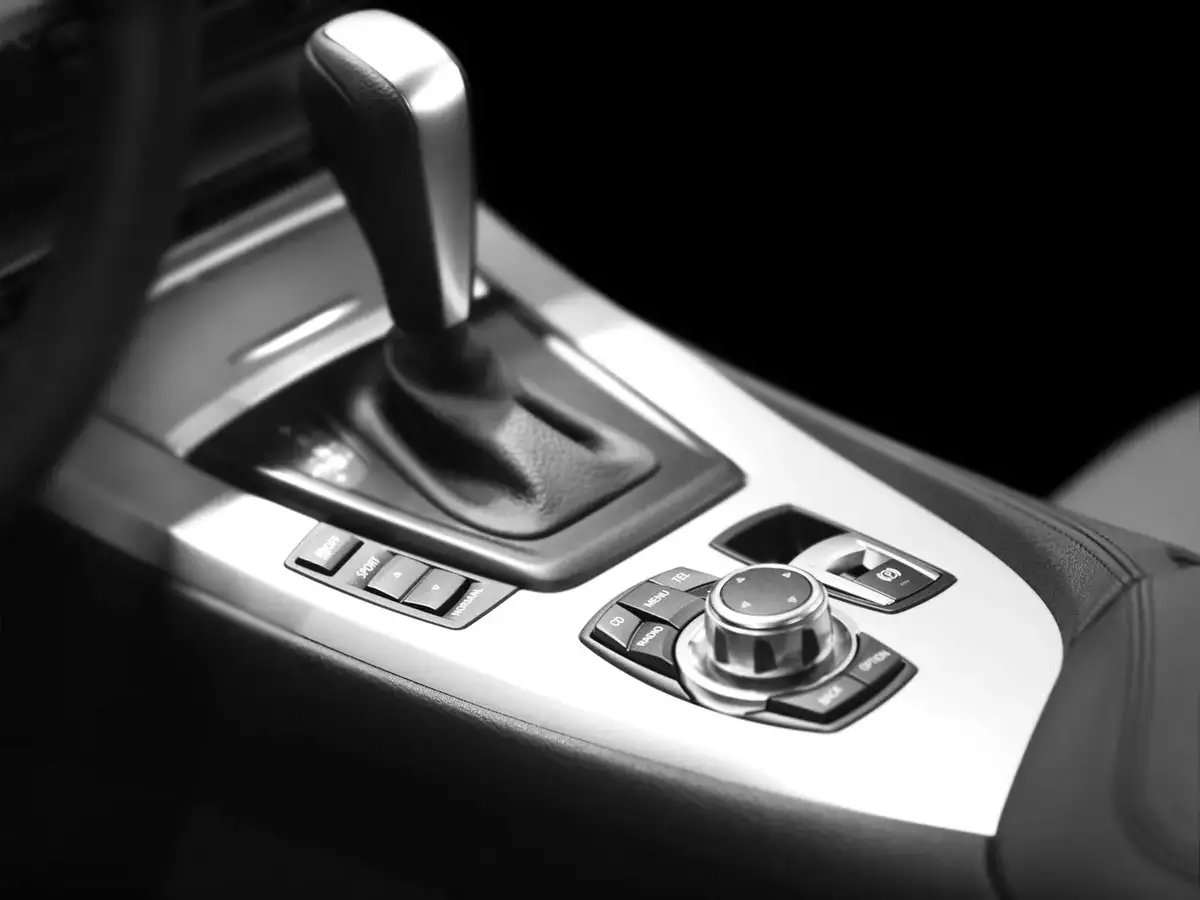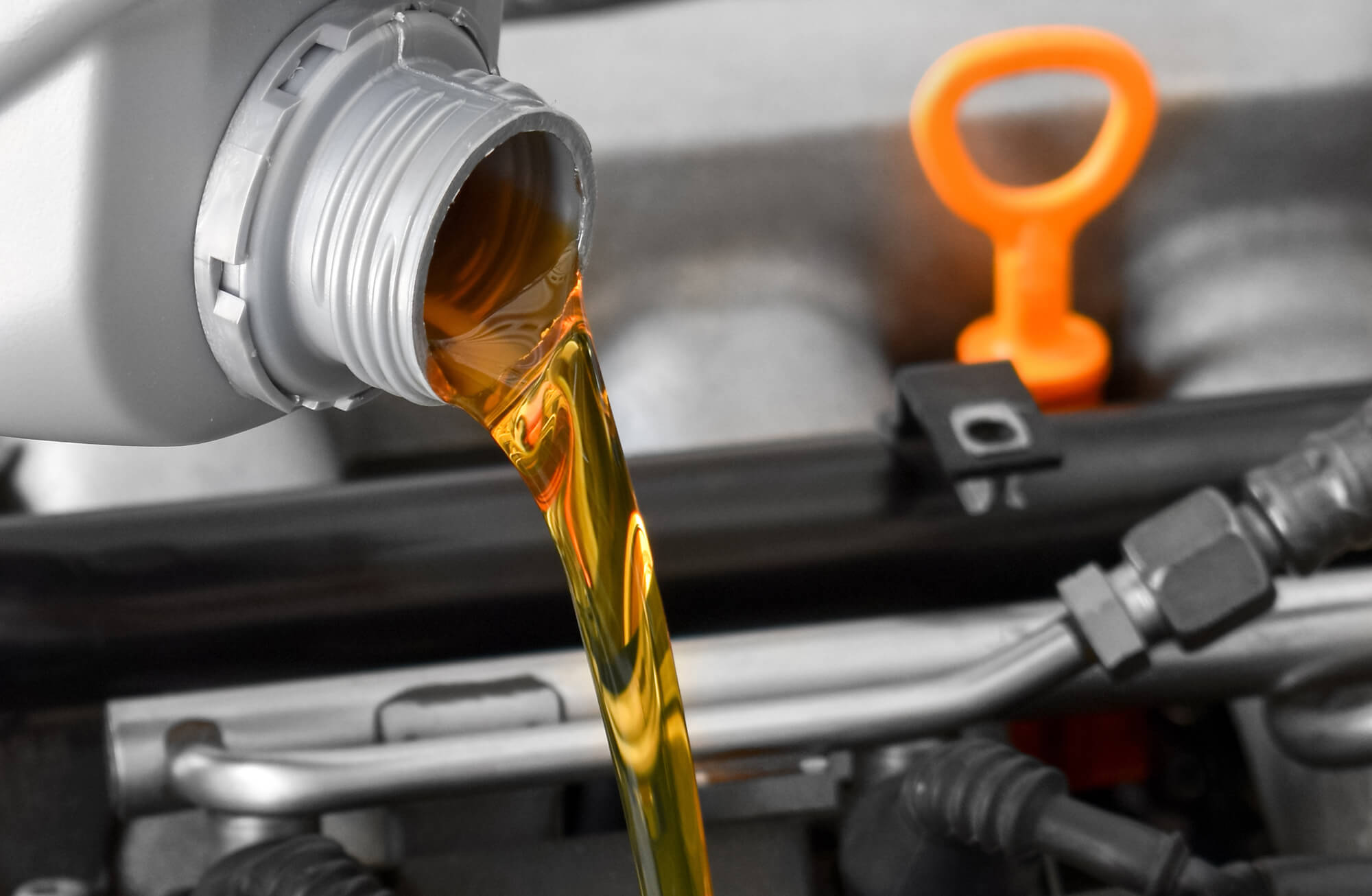Brembo, the renowned Italian brake manufacturer, has unveiled its largest carbon brake package ever for the Bugatti Bolide, the epitome of combustion-only hypercars. With a staggering 1,825 horsepower, this vehicle is designed to soar past 300 mph, relying on the exceptional performance of its carbon-carbon brakes to ensure safe and controlled stops. Crafted with precision and innovation, these brakes provide unparalleled stopping power for the ultimate driving experience.
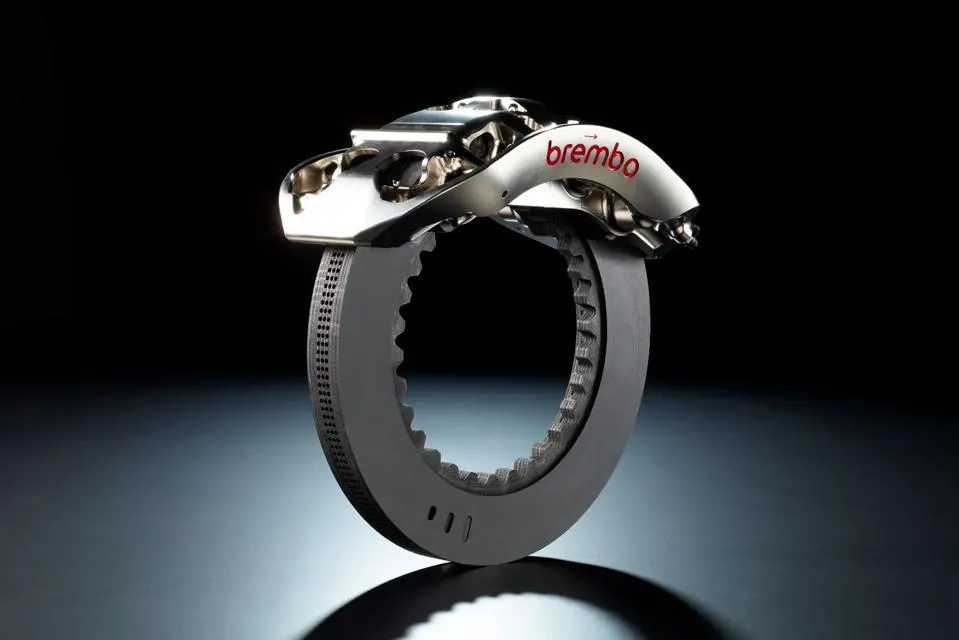
The majority of standard street cars are equipped with iron brake rotors paired with single-piston steel calipers. While this setup tends to be heavier, it offers cost-effective manufacturing, easy maintenance, and long-lasting durability. Found in tens of millions of vehicles worldwide, this design can withstand temperatures of nearly 500°F on the rotor surface, particularly during emergency stops. High-performance sports cars often opt for iron brake rotors but with aluminum calipers featuring multiple pistons, enhancing the braking system’s strength for more efficient stopping power. Premium configurations may even incorporate iron-aluminum rotors to reduce weight and enhance heat dissipation, crucial for preventing brake fade—a phenomenon where brakes lose effectiveness due to excessive heat, typically occurring around 850°F, leading to compromised stopping distances and potential smoking of the brakes.
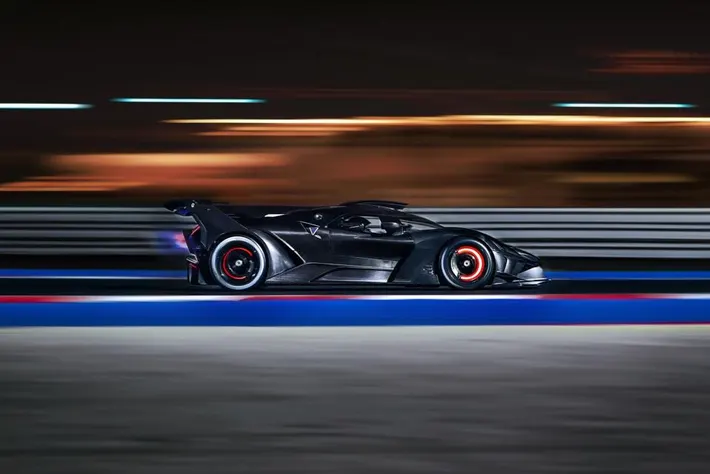
Exotic cars, supercars, and hypercars are typically fitted with carbon-ceramic braking systems. These high-performance braking systems use a brake rotor made from a mixture of carbon, ceramics, epoxy resin, silicon carbide, and carbon fiber (the ingredients are baked together in a mold at high temperatures to form the rotor). Paired with aluminum multi-piston calipers, the carbon-ceramic design is widely considered one of the best brake systems in the world. Robust and highly heat resistant, this type of brake can tolerate temperatures upwards of 1,400° to 1,800°F. There’s a widespread misconception that carbon-ceramic brakes reign supreme in all conditions. Yet, when subjected to exceedingly high temperatures surpassing 2,200°F, these brakes encounter a critical issue: the rotor surface starts decomposing and delaminating. This deterioration severely compromises the brakes’ ability to bring the vehicle to a halt effectively, posing a significant safety risk.
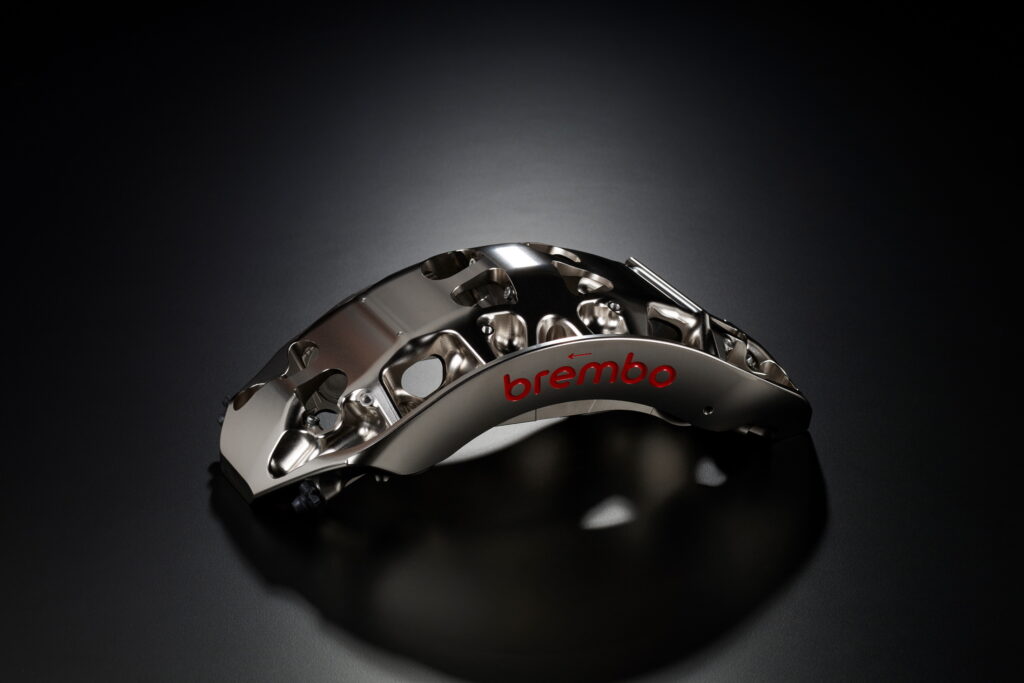
To match the breathtaking performance of the Bugatti Bolide hypercar, Brembo invested two years in developing a cutting-edge braking system. Engineered with innovative carbon-fiber-reinforced carbon rotors, this system ensures unparalleled stopping power. The 15.3-inch rotors are paired with eight-piston mono-block calipers at the front and six-piston mono-block calipers at the rear, delivering exceptional braking performance. Constructed from nickel-coated aluminum, these calipers boast superior heat and corrosion resistance, ensuring optimal functionality even under extreme conditions. Furthermore, all four rotors boast a diameter of 390mm, with the front rotors slightly thicker than their rear counterparts.
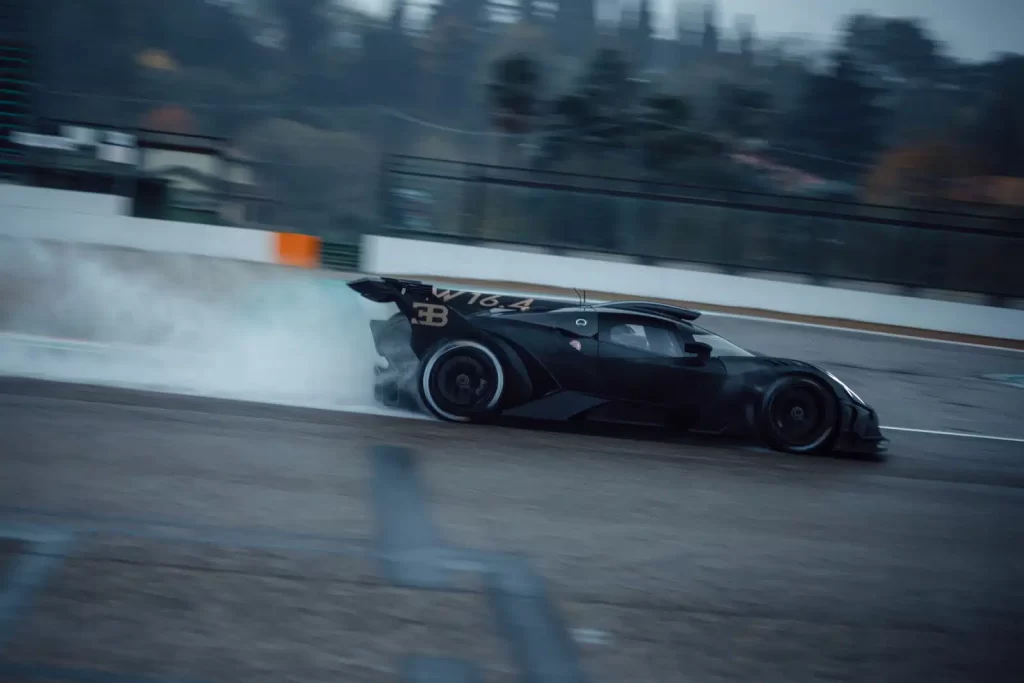
Crafted from aluminum alloy and coated with nickel, these rotors exemplify precision engineering and durability. Remarkably lightweight due to their carbon construction, each rotor weighs a mere seven pounds, effectively reducing unsprung mass and enhancing overall agility. During the collaborative development process, Brembo and Bugatti engineers meticulously optimized the brake air ducts to achieve optimal cooling efficiency without compromising aerodynamics. Bugatti reports that 85-90 percent of the airflow from the ducts is directed to the discs and pads, while the remaining airflow reaches the calipers, ensuring consistent and reliable braking performance even under extreme conditions.
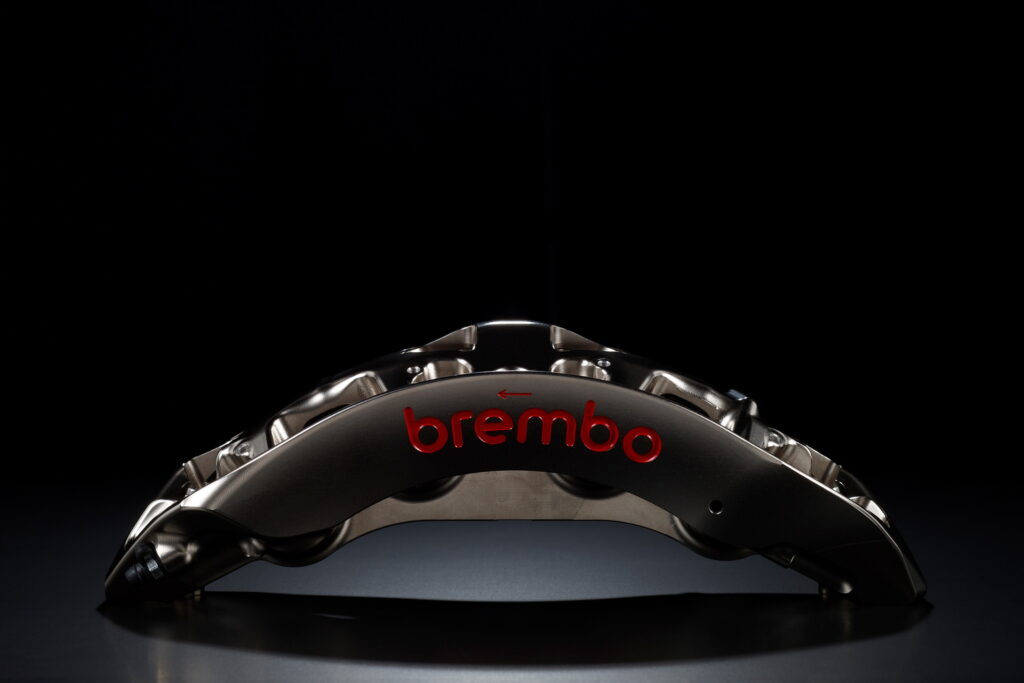
Reports indicate that the Bolide’s carbon-carbon rotors boast an impressive capability to withstand temperatures exceeding 3000°F. However, while the rotors demonstrate remarkable heat tolerance, several other components within the supercar’s braking system cannot operate at such extreme temperatures. Therefore, the system relies on meticulously engineered cooling mechanisms to maintain safety and functionality. Brembo asserts that the new braking system reflects the technological sophistication akin to that found in LMh/LMDh and Formula 1 cars, establishing the Bolide as an unparalleled production vehicle in its class. Mario Almondo, Chief Operating Officer of Brembo Performance, expressed, “Developing the braking system for the Bugatti Bolide was a unique and very exciting challenge for Brembo’s Performance Division – and we are proud of what we have achieved. We had to re-engineer the entire system to cope with the incredible yet demanding characteristics and performance of the Bolide.”
Unfortunately, the availability of the Bugatti Bolide is limited, with only 40 units slated for production by the French automaker. Moreover, each hypercar, boasting a hefty price tag of $4 million, has already been reserved by eager buyers. Consequently, access to the groundbreaking carbon-carbon brake technology from Brembo is not only innovative but also exceptionally exclusive, adding to the allure of this remarkable vehicle.
